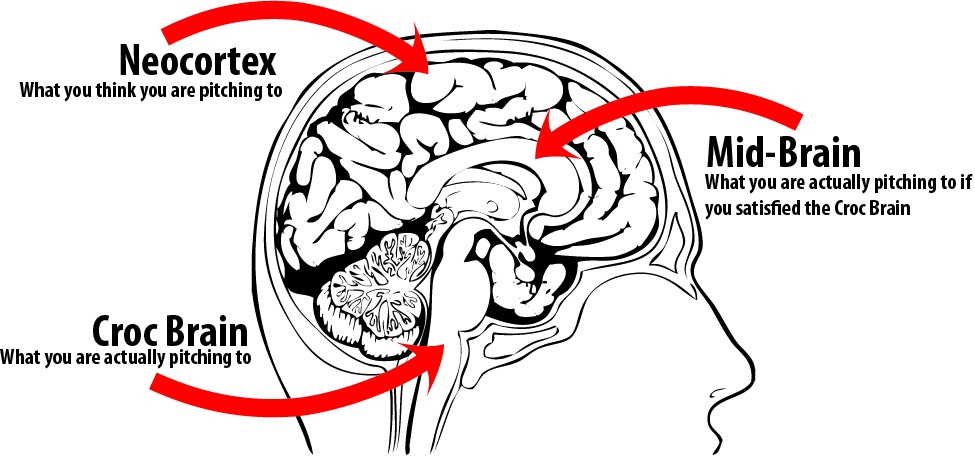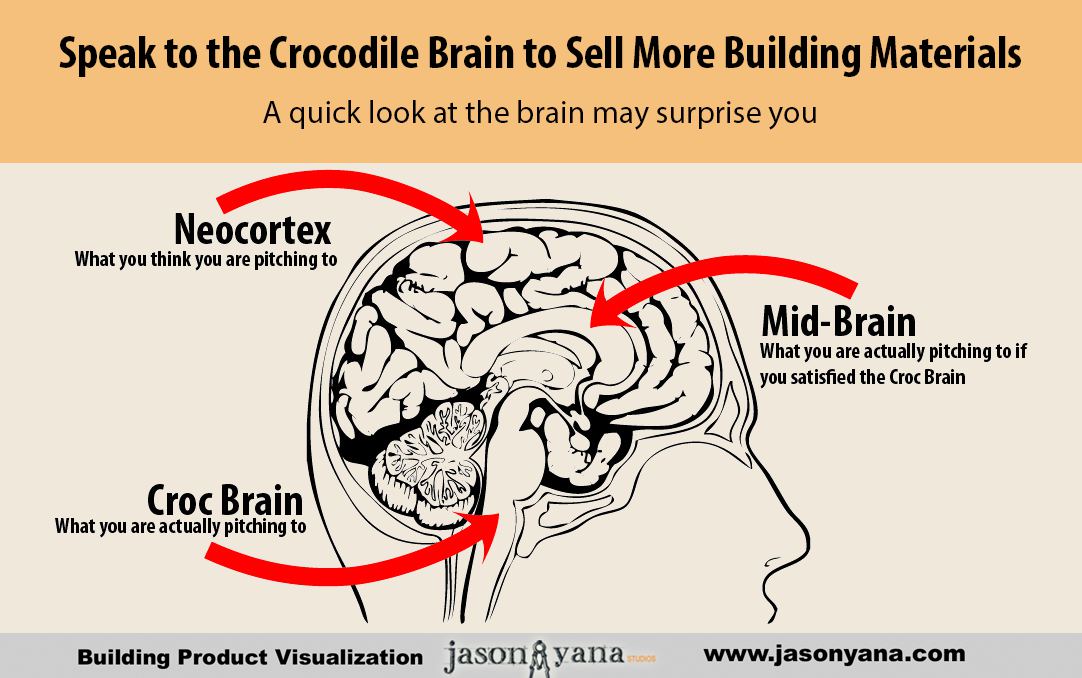Marketing products effectively and consistently require understanding the buyer’s mind; this involves a depth of knowledge about how the brain operates. Many marketers may think of the brain in terms of psychological definitions, but there is a large difference between the mind and the brain.
The mind evolves from environmental shaping and experiences, whereas the brain is pure chemical and physiological matter. Oren Klaff, the author of Pitch Anything, explains that it is imperative to speak to the crocodile brain to market building products and building materials more effectively.

What exactly is the crocodile brain?
There are three parts of the brain: Neo-cortex (frontal), mid-brain, and the crocodile (reptilian) brain. The crocodile part of your brain, although beneath and behind the neo-cortex and mid-brain (both of which take up more space) is the first to receive information from outside sources.
It must decide what to do when confronted with a person, situation, visual stimuli, and so on. In other words, this part of the brain is the first to receive marketing visuals and information, and it will either pass it on to the main part of your brain or ignore it.
No new information ever gets to the rest of the brain (the place where someone will decide that they want your product) without passing through the reptilian brain.
How can I get my marketing materials past the crocodile brain and on to the neo-cortex?
This is the ultimate question and the most important; if the crocodile brain of the buyer decides to ignore your message, visual, or pitch, then your product will not sell. It’s important to understand how the crocodile brain thinks or works in order to get through on its level.
Here are characteristics of the crocodile brain, which, when analyzed give a perfect guide to marketers on how to present their material:
- Driven by survival.
- Filters out all extraneous data.
- Selects only information received fast and summarized.
- Looks for strong contrast cues (this can be in words or visual images).
- Seeks visuals and narratives.
- Ignores the ordinary/desires the unique (the survival mode says if something is ordinary or familiar, it is to be ignored because it’s not essential to survival. Only something perceived as unique, different, or dangerous will be passed on to the neo-cortex brain).
By understanding the workings of the brain, marketers can tap into greater selling power. When developing visuals, digital marketing material, or other advertising items, speaking to the crocodile brain means getting your message all the way through.
Bottom Line – don’t let the crocodile brain hijack your building material marketing message
Your message must be :
- Simple, Clear and Big Picture – distill the conversation down to the core and filter out all the other details, those can come later . . .
- Unique and Positive – The information you are giving the crocodile brain has to be new in some way, or it won’t even be noticed. Giving a hint that something great is coming if they keep paying attention.
Some things to think bout when you are considering how to approach explaining your products to your target audience.
How can you use this information to hone your message today? right now?
Regards and I hope you find beauty today, even in your crocodile brain.
-Jason Yana
About the Author :
Jason Yana has 2 decades of experience in architectural technology, 3d graphics and construction marketing. This unique combination provides highly-effective visual representations of building products that fuel marketing and support efforts.
His award-winning body of work informs, inspires and educates building product customers.

